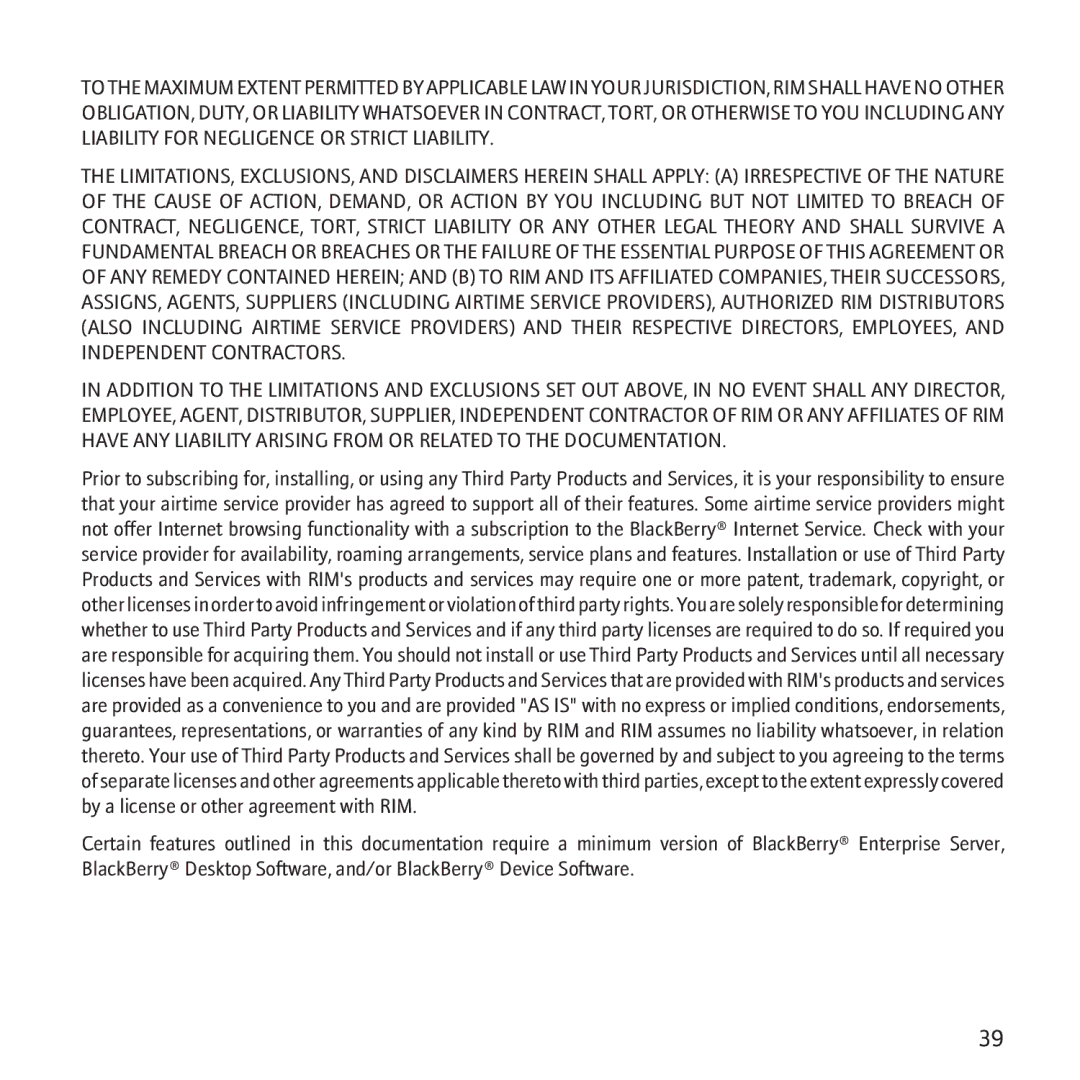9550, 9520 specifications
The BlackBerry 9520 and BlackBerry 9550 are noteworthy smartphones that marked an era of innovation for Research In Motion (RIM), the company behind the BlackBerry brand. Released in 2009 and 2010 respectively, both models were part of the BlackBerry Storm series, known for their touchscreen capabilities and emphasis on business functionality.The BlackBerry 9520, also known as the BlackBerry Storm 2, introduced notable enhancements over its predecessor, the original Storm. One of its key features was the SurePress touchscreen technology, which provided tactile feedback when users pressed the screen. This unique feature aimed to bridge the gap between traditional keyboard typing and touchscreen interfaces, allowing for a more intuitive experience. The device boasted a 3.25-inch display with a resolution of 480 x 360 pixels, ensuring that users could view emails, documents, and multimedia content with clarity.
In terms of connectivity, the 9520 supported 3G technology, allowing for fast data speeds. It was equipped with Wi-Fi support, enabling users to access high-speed internet in areas with wireless coverage. The device ran on the BlackBerry OS, which was optimized for business users, featuring email integration, calendar synchronization, and messaging capabilities. The inclusion of a 3.2-megapixel camera allowed users to capture images, although photography was not the primary focus of the device.
The BlackBerry 9550 offered similar features but was designed with slight enhancements and improvements in performance. It featured an upgraded capacitive touchscreen that eliminated some of the lag associated with the SurePress technology of the 9520. This model retained the 3.25-inch display but delivered a more responsive user experience. Furthermore, the 9550 included an improved internal memory configuration, enhancing app performance and multitasking abilities.
Both the BlackBerry 9520 and 9550 came with robust security features, a hallmark of BlackBerry devices, making them particularly appealing to enterprise users. The integration of BlackBerry Messenger (BBM) and access to the BlackBerry App World allowed users to communicate swiftly and access a range of applications, further enhancing the device’s utility.
In summary, the BlackBerry 9520 and 9550 represented significant steps forward in the convergence of communication and technology during their time. Their touchscreen interfaces, business-oriented features, and commitment to security catered to a growing market of professionals seeking reliable smartphones. Although these devices are now considered legacy products, they played a pivotal role in the evolution of mobile technology and set the stage for future advancements in smartphone design and functionality.
